<< Learning Center
Media Accessibility Information, Guidelines and Research
Kentucky Teachers Know Captioned Media is Essential
By Genny Lyman
[Editor's Note: Originally written in 2004, this archived article's content is preserved.]
The Captioned Media Program (CMP), through the National Association of the Deaf, provides free-loan educational media for various groups and schools to assist deaf and hard of hearing students in education. Language-controlled captions appear on each media, making it possible for the viewer to understand the same information a hearing person would receive from the soundtrack.

The CMP includes titles in clearly defined school subject areas and student interest levels from preschool through postsecondary. Each title has been carefully selected and specifically adapted for use with learners who have a hearing loss. Teachers and others who work with one or more of these students in residential, day, or mainstreamed programs will find captioned media to be a most invaluable tool and curricula builder.
Teachers find that the media provide an enriched educational and cultural experience through which the deaf students are brought closer to the realities of their environment.
Library managers in schools for the deaf provide good accessibility, knowledge of the media, research for unit plans, and personal contact to help teachers integrate the media into their lesson plans with ease and confidence.
Without good teachers, there probably would not be a need for the CMP. They are the reason the program is successful. The following testimonials were provided by some of the most dedicated teachers at the Kentucky School for the Deaf.
- Vikki Rehberg: "Because our children rely heavily on visual stimuli and sometimes have a limited experiencial base, the captioned media fill a twofold need. They provide visual information on topics, which may be unfamiliar."
- Brenda Prescott: "My special needs students must have information presented in a variety of ways. Captioned media provide a visual explanation of topics discussed in a class and often prepare us for trips for hands-on learning. Prereading-level students learn to associate written information with actions seen on media. Some hard of hearing students learn to match sounds with written words. 'Slow readers' learn to increase their reading speed to keep up with the captions. Some deaf learning disorder/behavior disorder (LD/BD) students attend better to captioned media than to the teacher. Captioned media that are also signed are excellent for students with an oral background who are learning to sign."
- Paula Meckes: "Many times the media reinforce visually what we've discussed in class. The vocabulary that we've emphasized in class shows up again in the captioning to again reinforce concepts. Sometimes there's additional information in a media that we've not discussed but that's interesting to the students. Every now and then we will surprise the students with a pop quiz about the movie. This would be the same thing as if they read from a textbook and took a pop quiz. I think Kentucky's program is successful because of Genny Lyman. She provides availability on campus. She knows about each media. If we say, 'Do you have anything on the Bill of Rights?' she knows of a medium. She provides fast delivery. We keep the catalogs with the media lists."
- Duane Belcher: "Captioned media are a resource for teachers to use to supplement lessons being taught in the classroom. They provide a wealth of pertinent information that reinforces concepts that are being taught. They help encourage students to enhance their reading skills by reading the captions. The lesson guides help teachers by offering useful suggestions to implement instructional activities being introduced. Teachers at Kentucky School for the Deaf realize the value of captioned media and the rewards of sharing them with their students."
- Jeanie Abney: "Have you ever turned the sound off on a TV show? You might get one-eighth of what they are talking about, if nothing is happening off-camera. Captioned media are chosen for their clarity and how well planned and presented the information is done. That way the media is really screened twice. It makes most of them a better teaching aid. The captioning allows the 'normal' deaf to equally access the information. It also provides an opportunity for language and reading reinforcement."
- Evie Smith: "I make use of a lot of media in class and in small group counseling sessions because deaf students are such visual learners that a media can reinforce what they have been taught through language. Also, media show real-life situations and places that many students have never experienced. Expressions and body language are a large part of deaf communication and these are easily clarified on media."
- Jennifer Paycheck: "Captioned media help to take the children out of the classroom to places we cannot possibly visit."
- Jan Bradshaw: "Captioned media are a terrific way for deaf children to 'visit,' 'tour,' and 'observe' many things that they would never have the opportunity to see in the school setting. They provide a powerful connection between the printed word and meaning!"
- Nancy Mann: "I feel that the high rate of captioned media usage on Kentucky's campus may be attributed in part to the teacher's increased awareness and knowledge of the Captioned Media Program. Several of our teachers have served on the evaluation and/or validation selection teams. Throughout this process, teachers have become more familiar with titles in the collection and how they relate to their instructional curriculum. Each teacher on the committee also collects from teacher peers the curricular content areas that need additional titles added to the collection. Through their participation on the evaluation/validation committees, teachers have better knowledge of available and needed titles. They then share that knowledge with their teacher peers."
--Written by Genny Lyman, a media specialist at the Kentucky School for the Deaf and former library manager for the CMP.
Tags:
Please take a moment to rate this Learning Center resource by answering three short questions.

